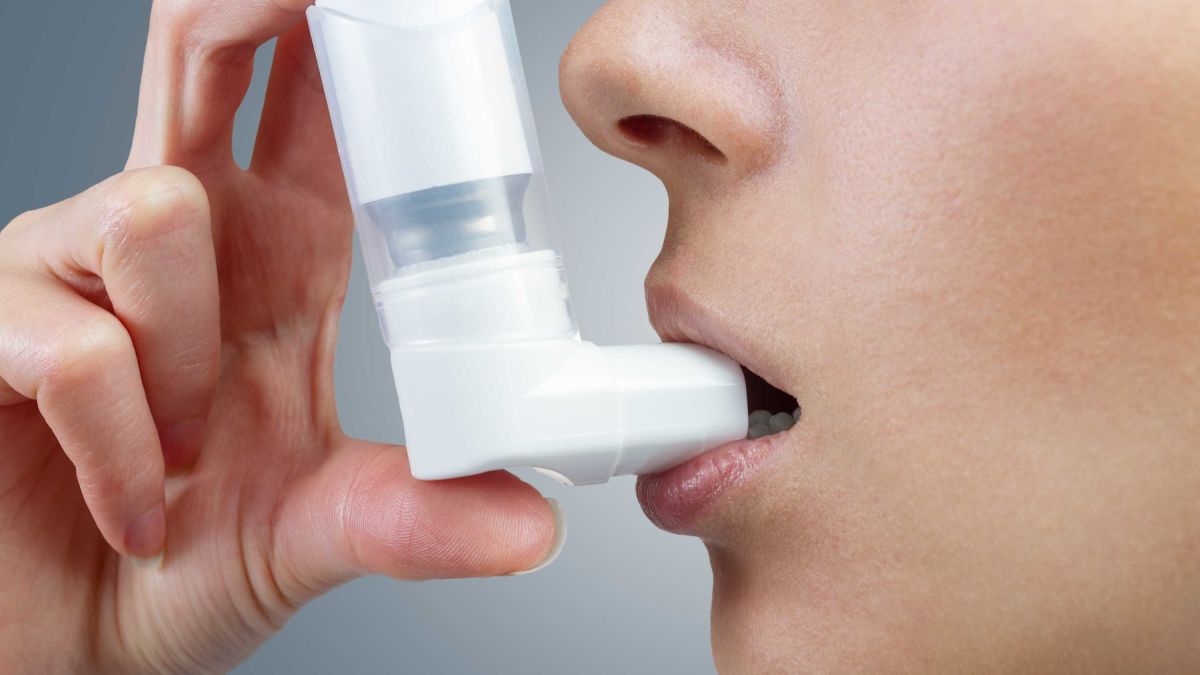Asthma Inhalers And Usage - Empowering Respiratory Health
Mastering the art of asthma inhalers and usage is an indispensable aspect of asthmatic care. The correct choice and proficient use of inhalers not only alleviate symptoms but also contribute significantly to a patient's overall well-being.
Author:Katharine TateReviewer:Karan EmeryMar 07, 20243.6K Shares68.3K Views

Asthma, a chronic respiratory condition affecting millions globally, underscores the critical need for effective management strategies. Characterized by inflammation of the airways and heightened sensitivity, asthma can lead to recurrent episodes of wheezing, shortness of breath, and chest tightness. Amidst the myriad treatments available, one pivotal tool in the arsenal against asthma is the use of inhalers.
These devices, designed to deliver precise doses of medication directly to the lungs, form the cornerstone of asthma management. In this comprehensive exploration, we delve into the intricate world ofasthma inhalers and usage, deciphering the types, techniques, and nuances that empower individuals to navigate their respiratory journeys with confidence and control.
4 Common Asthma Symptoms
- Shortness Of Breath - Feeling like you can't catch your breath, like you can't get enough air. Asthma narrows the airways, making it harder for air to flow in and out of your lungs.
- Wheezing - A whistling or squeaky sound when breathing, especially during exhales. Constricted airways cause the air to squeeze through narrow passages.
- Chest Tightness - A sensation of pressure or squeezing in your chest. Inflamed airways and muscle tightening make the chest feel constricted.
- Persistent Cough - A continuous cough, especially at night or early in the morning. Irritation in the airways triggers the cough reflex, attempting to clear the passages.
7 Types Of Asthma Inhalers
- Metered-Dose Inhalers (MDIs) -These are the most common inhalers. They release a specific amount of medication in aerosol form when you press down on the canister. MDIs require good coordination to ensure the medicine reaches your lungs.
- Dry Powder Inhalers (DPIs) -DPIs deliver medication in powder form. Instead of a mist, you inhale the powder directly into your lungs. DPIs are breath-activated, meaning you need to take a deep breath to get the medicine.
- Soft Mist Inhalers (SMIs) -These inhalers produce a slow, gentle mist of medication, making it easier to inhale. They are suitable for people who find it challenging to use MDIs or DPIs.
- Nebulizers -While not exactly inhalers, nebulizers are devices that turn liquid medication into a fine mist, which you inhale through a mask or mouthpiece. Nebulizers are often used for young children or those who have difficulty using traditional inhalers.
- Combination Inhalers -These inhalers contain a mix of medications, usually a combination of a long-acting bronchodilator and an inhaled corticosteroid. They are designed to provide both quick relief and long-term control of asthma symptoms.
- Rescue Inhalers (Short-Acting) -These inhalers, also known as quick-relief or rescue inhalers, contain short-acting bronchodilators that provide rapid relief during asthma attacks or episodes of shortness of breath.
- Maintenance Inhalers (Long-Acting) -These inhalers contain long-acting bronchodilators or inhaled corticosteroids, offering continuous control of asthma symptoms over an extended period. They are used to prevent and manage chronic symptoms.
Using Asthma Inhalers Correctly
Shake It
Prior to utilizing your inhaler, it is paramount to ensure a thorough shaking process. Hold the inhaler in an upright position and vigorously shake it for a few seconds. This crucial step serves the purpose of meticulously mixing the medication within the inhaler. It is particularly vital as numerous inhalers comprise a blend of different medications.
The vigorous shaking guarantees a homogeneous mixture, ensuring that each dose delivers a consistent combination of therapeutic agents. This uniform distribution is instrumental in enhancing the effectiveness of the medication's delivery, allowing for a more reliable and targeted impact on your respiratory system.
Stand Up Straight
Maintaining the right posture is a pivotal factor when using your inhaler. Whether standing up straight or sitting comfortably, the goal is to optimize the inhalation process. Ensuring proper alignment of your body allows your lungs to expand fully, creating an expansive canvas for the medication to penetrate deeply into your airways.
The significance lies in the unrestricted pathway the medication can traverse, reaching the deeper recesses of your respiratory system and fostering an optimal environment for its therapeutic effects. So, when reaching for your inhaler, paying attention to your posture becomes a fundamental step in maximizing the efficiency of the medication's delivery to where it's needed most.
Breathe Out First
Before using your inhaler, it's crucial to initiate the process by exhaling steadily. Taking a regular breath out serves a dual purpose: it clears your lungs of stale air and sets the stage for a more effective inhalation during the subsequent breath. This deliberate exhalation not only expels residual air from your lungs but also creates an optimal environment for the incoming medication.
By starting with a clean slate, so to speak, you enhance the inhaler's ability to deliver the medication to the freshly cleared airways, ensuring that each inhalation is maximally effective in reaching and treating the intended areas of your respiratory system.
Seal Your Lips
As you prepare to use your inhaler, a critical step involves the precise positioning of the device in your mouth and the creation of a secure seal with your lips around the mouthpiece. This meticulous sealing is pivotal, acting as a barrier to ensure that the medication is directed precisely into your lungs without any escape into the surrounding air.
The significance of this airtight seal lies in its role as a conduit for the medication's targeted delivery, allowing it to reach the depths of your respiratory system with optimal efficiency. By adhering to this step, you guarantee that the therapeutic effects of the medication are concentrated within your lungs, maximizing its potential to alleviate symptoms and promote respiratory well-being.
Breathe In Slow And Deep
While pressing down on the inhaler to release the medication, it's crucial to engage in a deliberate and unhurried inhalation process. This entails breathing in slowly and deeply through your mouth. The intentional nature of this inhalation technique serves a vital purpose, it enables the medication to traverse the entire respiratory pathway, reaching the lower regions of your lungs with precision.
This deliberate approach ensures that the medication can effectively open up constricted airways, providing targeted relief where it's needed the most. By adopting this unhurried breathing pattern, you optimize the inhaler's therapeutic impact, allowing the medication to exert its beneficial effects in promoting smoother, more unrestricted breathing.
Hold Your Breath
Following the inhalation of medication from your inhaler, it is crucial to observe the next step: holding your breath for approximately 10 seconds, or for a duration that feels comfortable. This pause serves a pivotal role in the inhalation process, allowing the medicine adequate time to settle within your lungs. By holding your breath, you facilitate the absorption of the medication into the lung tissues, maximizing its effectiveness.
This intentional delay ensures that the therapeutic components of the medicine are absorbed efficiently, promoting a targeted and sustained impact on your respiratory system. Embracing this brief moment of breath retention becomes a strategic element in the overall inhaler usage, enhancing the medicinal efficacy and contributing to the effective management of asthma symptoms.
Asthma Inhalers And Usage - FAQs
How Should An Asthma Inhaler Be Used?
Close your lips around the inhaler so that you form a tight seal. Tilt your head back slightly. As you slowly begin to breathe in through your mouth, press down once on the top of the inhaler. Keep breathing in slowly, as deeply as you can.
Can You Drink Water Right After Using An Inhaler?
If you are using a corticosteroid inhaler, gargle and rinse out your mouth with water after use. Do not swallow the water. Swallowing the water will increase the chance that the medicine will get into your bloodstream. This may make it more likely that you will have side effects.
Can I Use My Inhaler Before Bed?
Yes, you can use your inhaler before you go to bed to help control asthma at night. You should also keep it near your bed in case you have an asthma attack during the night. If that occurs, sit up before using your inhaler, as that helps the medication get into your throat and lungs more easily.
Conclusion
Mastering the art of asthma inhalers and usage is an indispensable aspect of asthmatic care. The correct choice and proficient use of inhalers not only alleviate symptoms but also contribute significantly to a patient's overall well-being. As technology evolves and medical science advances, the landscape of asthma management continues to transform.
By staying informed, adopting best practices, and fostering a collaborative relationship with healthcare providers, individuals can not only breathe easier but also lead fulfilling lives unhindered by the constraints of asthma. The journey towards optimal respiratory health begins with understanding, embracing, and mastering the effective utilization of asthma inhalers.

Katharine Tate
Author

Karan Emery
Reviewer
Latest Articles
Popular Articles
